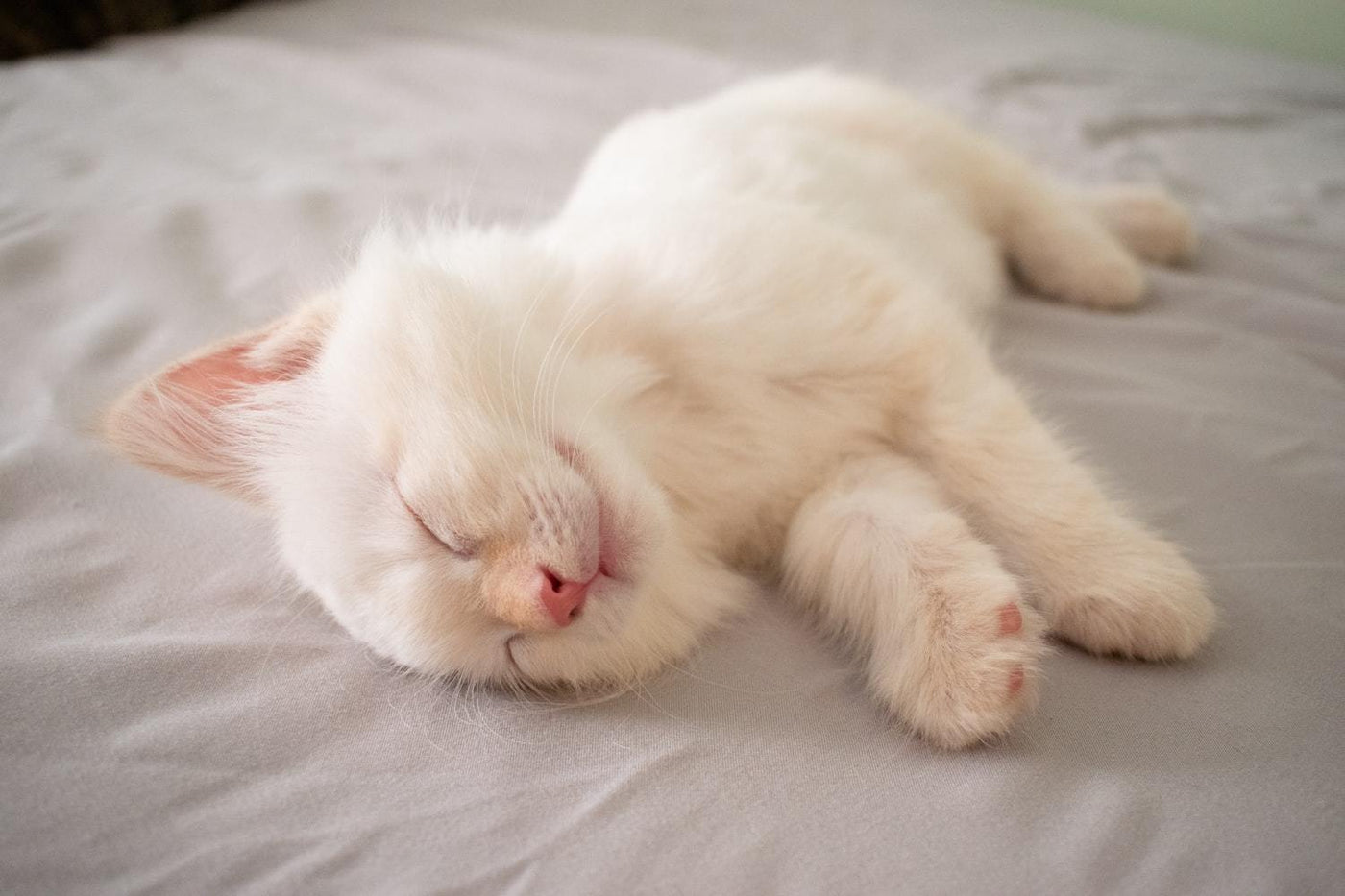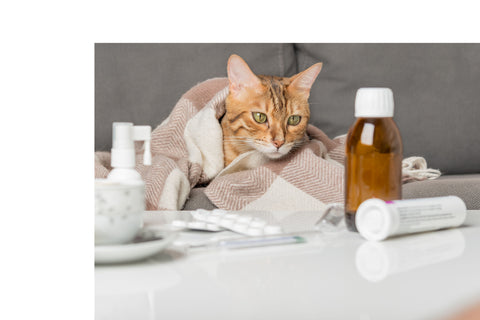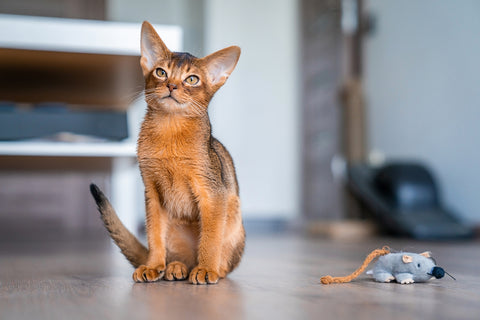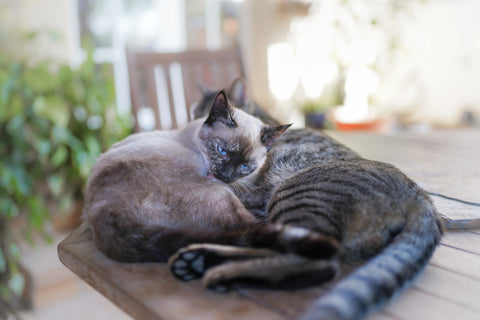
We have all waited for this moment for so long, and the time has finally come. The Basepaws Health Marker reports are ready to go live at last! After so many months of anticipation, we are immensely thankful for your incredible patience and support and we are very excited to finally be able to share the bits and pieces about this new addition of the report. Dear ladies and gents, this is your Basepaws Health Marker report!
What is the basepaws Health report?
Basepaws health report is the section of the basic Basepaws Cat DNA Report which reports 38 genetic mutations that correspond to 16 genetic conditions. Here you will be able to discover if your cat has tested positive for a genetic variant associated with any of the included genetic diseases. We are excited to share these discoveries and learn more about feline genetic health worldwide! To help you understand your cat's Basepaws health report, let's start with a few genetic terms and laws you need to know first.
Key terminology
Genotype: The portion of the genome (set of genes) which encodes a particular trait (i.e. the color of the eyes).
Phenotype: The physical expression of a genetically encoded trait. The expression of a genetic trait is largely impacted by environment. Thus, phenotype comprises of all the observable characteristics of an organism shaped by both the genotype and the environment. It is important to remember that the observable characteristics are not just the physical appearance, but also all the proteins, cells, organs and systems which compose the body.
Genetic marker: Specific sequence of the DNA with a known location in the genome which can be used to identify species, breeds, individuals or characteristics. In our Health Markers report, we are looking for genetic markers associated with different genetic conditions in cats. We are using 39 genetic markers to test 17 different genetic conditions.
Genetic mutation: A permanent alteration to the genetic sequence which results in a novel gene variant. Genetic mutations are important sources of variability among individuals of all species, including cats. While these genetic anomalies can have different impacts - beneficial, neutral or even harmful - their occurrence is very important as it provides the populations with diverse and unique individuals.
Allele: Distinct variant of a gene. Every gene is present in two copies (one inherited from each parent). Genetic mutations create new variants of genes called alleles. Thus, every individual will carry two alleles of each gene.
Homozygote: A carrier for two identical alleles of one gene.
Heterozygote: A carrier for two different alleles of one gene.
How are genes expressed and inherited?
Every gene in your cat's genome is present in two copies (one from each parent). Thus, your cat will carry two alleles of each gene. If these alleles are the same, then they will both be visible in the phenotype. Cats who carry the same allele of a certain gene are homozygotes for this gene. If your cat carries two different alleles of the same gene, they are heterozygotes for this gene. Which allele of the two in a heterozygote will be expressed in the phenotype depends on their relationship.
Some alleles are dominant, meaning that they have the ability to "hide" other alleles in the genome and be the only expressed allele in the phenotype. These alleles are always expressed, both in homozygotes and heterozygotes. On the contrary, some alleles are recessive, thus being expressed only in a homozygous state. Furthermore, some alleles can also be co-dominant, meaning that they form a joint expression in the phenotype.
Example
For a better understanding of dominant vs. recessive relationship of alleles, we can use the examples of polycystic kidney disorder (PKD) and myotonia. The mutation associated with PKD is an autosomal dominant mutation, meaning that every cat who inherits at least one mutated copy of the gene (allele) is affected. Thus, both heterozygotes and dominant homozygotes will be affected and will be able to pass the mutation on to the offspring. If the heterozygote is crossbred with a healthy cat, there is a 50% chance for each kitten to be affected too. If two affected heterozygotes are crossbred, then there is a 75% chance for each kitten to inherit PKD. Dominant homozygotes (carriers of two mutated alleles) will always give affected offspring. Recessive homozygotes will not carry the mutation and they will be unaffected. Unaffected cats will always give unaffected offspring (left on the scheme below).
On the contrary, the identified cause for congenital myotonia in cats is a recessive mutation. This means that a cat must inherit two mutated copies of the gene (alleles), one from each of the parent, in order to be affected by the disorder. Cats who carry only one mutated allele and one healthy allele remain silent carriers (they can pass on the trait to the offspring but aren't affected themselves). If two silent carriers cross, there is a 25% chance for each kitten to be affected. Two affected cats give only affected offspring (right on the scheme below).

Scheme: Modes of inheritance. Genetic alleles are randomly passed on from parents to the kittens. Each kitten will receive one allele from each parent (the chances for any of the alleles to be passed on are equal). The final phenotype will be formed depending on the relationship of these alleles. The left scheme represents dominant inheritance (i.e. PKD). The right scheme represents recessive inheritance (i.e. congenital myotonia).
What do we test for?
We analyze over 39 genetic markers which are associated with 17 genetic diseases, including PKD, HCM and retinal degeneration. After our analysis, we will report to you whether your cat is a carrier of a mutation associated with a certain genetic trait. If we identify a dominant mutation in your cat, the disease associated with this mutation will certainly be expressed in the phenotype. If we identify a recessive mutation, we will inform you whether your cat is a homozygote or a heterozygote for this mutation. The disease will be expressed only in homozygotes.
The identified heterozygotes are silent carriers, as they carry the mutation but the mutation isn't actually expressed. Silent carriers can pass on the mutation to the offspring, and if the allele is met with another recessive allele in the offspring, the offspring will be affected. Thus, silent carriers are not recommended to be bred from in order to prevent succession of recessive mutations through generations. Complete list of currently included genetic conditions in our Health Markers report is available here.

Basepaws health report is one of the most important expansions of our report and it is a part of our largest report update yet. For this reason we will be releasing it gradually over the next few months. Make sure to keep an eye on your email for our notification on when to log in to check your new report out. If you have any questions about the upcoming updates or you need help reading your report, please don't hesitate to contact us to meow@basepaws.com. If you have questions about any of the genetic diseases, or you think your cat qualifies for one of our research programs, please send us an email to cure@basepaws.com.



